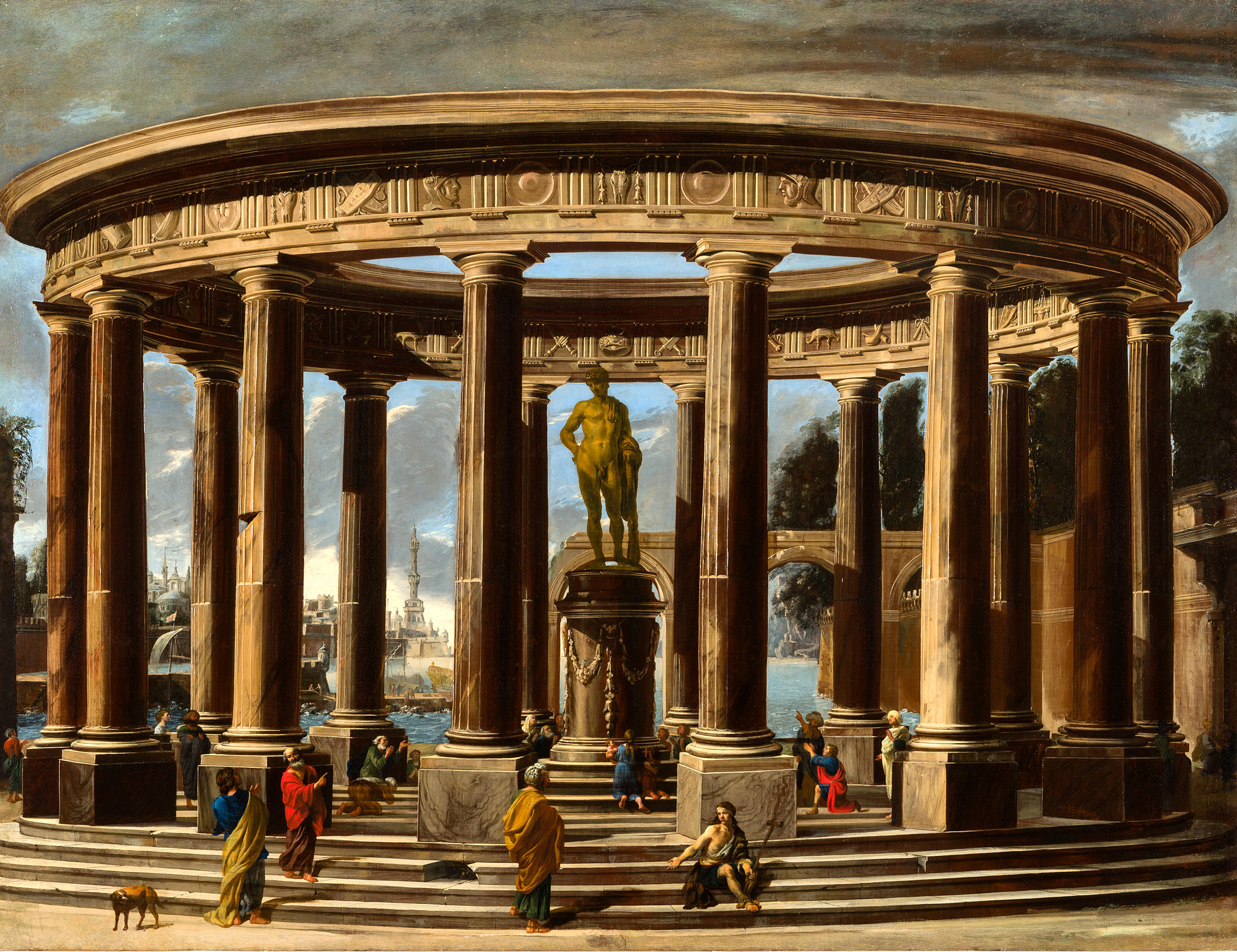Viviano Codazzi & Michelangelo Cerquozzi
View of a Temple with a Statue of Hercules
c. 1650
Oil on canvas
132 x 172 cm (52 x 67 3/4 in.)
Provenance
Private collection, Italy.
Description
Viviano Codazzi is documented in Naples from the mid-1630s, there he worked mainly with Domenico Gargiulo and Aniello Falcone. It is highly likely that before moving to Naples he settled in Rome where he studied the ruins of the ancient city, as well as seeing the works of Agostino Tassi and the young Claude Lorraine. In Naples Codazzi obtained two major commissions: one was a set of canvases with views of the most famous monuments of ancient Rome, painted for the Duke of Medina Torres and intended to be hung in the Palace of the Buen Retiro, and the other was a series of frescoes for the Certosa di San Martino. After the uprising of Masaniello in 1647 Codazzi moved to Rome where he spent the rest of his life, often working with Michelangelo Cerquozzi. Codazzi’s capricci with ruins of ancient Rome became the standard reference for this genre of painting: a century later in his Storia Pittorica dell’Italia, Luigi Lanzi called him “quasi il Vitruvio di questo genere di pittura” [“almost Vitruvius for this genre of painting”]. It has been noted that Codazzi’s views of ancient Rome are not faithful representations of actual sites but instead evocations of the grandeur and monumental character of the capital of the Empire; perhaps they even function as a sort of vanitas image, reminding the viewer that all greatness is temporary.
The present painting belongs to Codazzi’s early Roman years, around 1650; when it first appeared on the market in the 1990s it was presented together with a pendant depicting a View of an Idealized Ancient Temple in the Corinthian Order (fig. 1). Above a set of four steps a round temple or shrine composed of fourteen Doric columns dominates the composition; in the centre of the temple a statue of Hercules stands on high plinth and worshippers bring offerings to him. The inspiration for the round temple derives from such ancient monuments as the Temple of Vesta in Rome and the Temple of the Sybil in Tivoli; similar buildings appear in other paintings by Codazzi such as the Round Temple with offering to a Goddess (private collection, fig. 2), painted some years before in collaboration of Domenico Gargiulo. The comparison between the two paintings shows clearly the difference between the Neapolitan period and the Roman years: darker tones and a more sketchy handling appear in the Neapolitan painting while a more monumental an classical style characterise the present work.
Fig. 1. Codazzi and Cerquozzi, View of an Idealized Ancient Temple in the Corinthian Order, private collection.
Fig. 2. Codazzi and Gargiulo, Round Temple with offering to a Goddess, private collection



